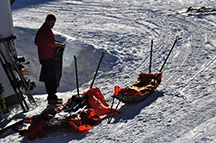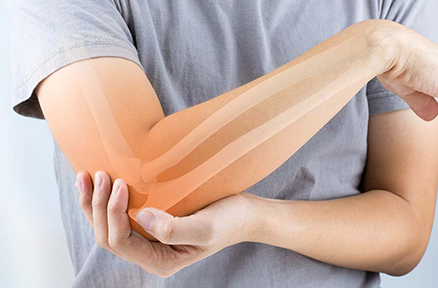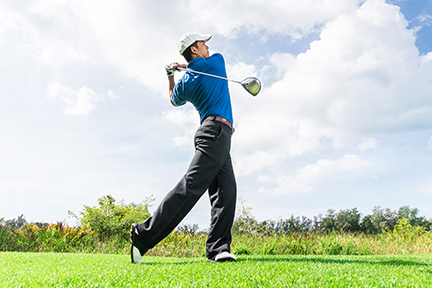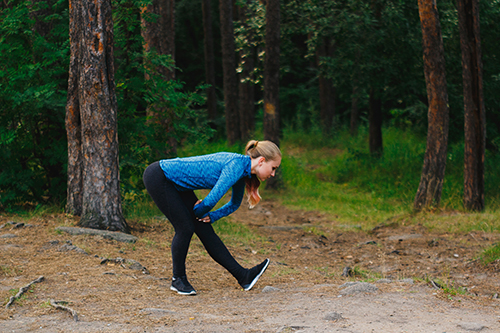Winter Sports and Injury
We can’t resist the lure of snow at Lake Tahoe, and the winter sports we love. Even during COVID-19 and especially with our warmer Bay Area weather, we are willing to put the chains on the car and brave the winter storms in the mountains to get out and play.
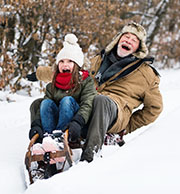
Skiing, snowboarding, ice skating, snowmobiling and sledding are fun winter activities, but they are not without risk. Some things you can do to set yourself up for a successful day include making sure your equipment is in good repair and adequate to the task. Ensuring that you are properly dressed and taking appropriate safety measures are important first steps to a happy day of cold weather play.
Don’t go it alone. It’s not just more fun to share an activity with someone else, it’s safer, too.
Let’s face it: it helps to be in shape for your sport, but lots of us are “weekend warriors” and have to be careful not to overdo! Warm up with gentle stretching and mobility exercises. Be sure to take frequent breaks during the day and stay hydrated.
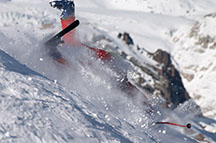
Checking in with your body can go a long way toward helping you to avoid injury, but sometimes injury happens. Knee injuries are common in dynamic sports, especially skiing where the legs can go different directions. Tears to the Anterior and Medial Cruciate Ligaments (ACL, MCL) are painful and while the MCL responds well to the Rest Ice Compression Elevation (RICE) protocol, the ACL may require surgery to repair and months to heal.
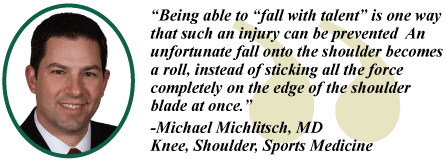
Shoulders are surprisingly easy to dislocate with the force of a fall. If you are able to convert your fall into a forward roll, good for you! If not, you could injure your rotator cuff. Continued difficulty raising your arm, or being unable to sleep on it may indicate significant rotator cuff injury.
The neck and back are at risk in any winter sport, as speed and collision are often factors in accidents, which can result in whiplash and more.
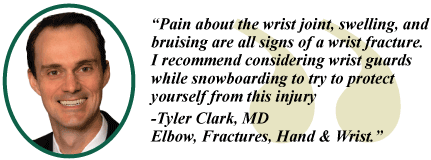
Hand and wrist injuries are common in high velocity falls. Distal Radius Fractures (broken wrist) is common in snowboarding, and skier’s thumb (injury to the ulnar collateral ligament, UCL) can also occur in mountain biking and snowboarding.
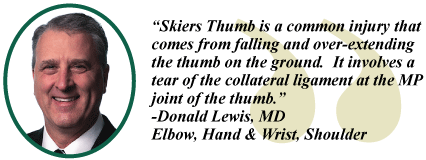
Many winter sports injuries happen at the end of a long, fun day when you’re more tired than you realize and push yourself further than you should. Know when it’s time to stop. And then stop! If you have to take that last run, take it easy. Don’t try to challenge yourself, try not to fall.
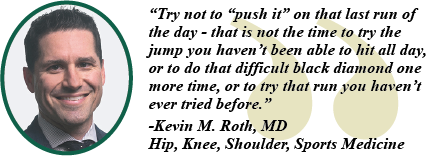
If you do have the misfortune of pushing yourself too far, be sure to see your doctor to rule out something more serious, but most winter sports injuries will be minor: muscle strains and sprains that will respond to the R.I.C.E. protocol (Rest, Ice, Compression, Elevation) and over-the-counter pain relief medications.
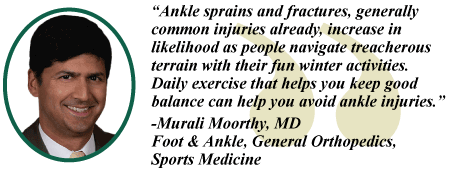
If your injury is more severe, a dislocation, tear, or fracture, you will want to consult an Orthopedist to determine your best course of treatment. Our Sports Medicine practitioners at Muir Orthopaedic Specialists and our Orthopedic Urgent Care are here to help you make the best decisions for your recovery.
